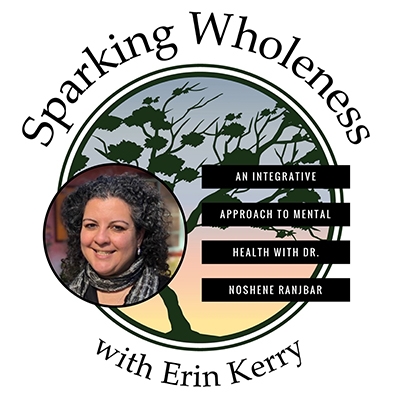 The field of psychiatry is changing as new discoveries about the brain are made. There are many pioneers using evidence-based medicine to seek out different treatments beyond traditional methods and prescription medication. While meds are definitely helpful for some and are one helpful tool in the toolbox, according to Dr. Ranjbar, “we are asking them to do what they were not made to do.”
The field of psychiatry is changing as new discoveries about the brain are made. There are many pioneers using evidence-based medicine to seek out different treatments beyond traditional methods and prescription medication. While meds are definitely helpful for some and are one helpful tool in the toolbox, according to Dr. Ranjbar, “we are asking them to do what they were not made to do.”
Dr. Noshene Ranjbar is Harvard trained and board certified in General Psychiatry, Child and Adolescent Psychiatry, and Integrative Medicine. She serves as medical director of the Integrative Psychiatry Clinic at Banner – University of Arizona Medical Center in Tucson.
In this episode, we discuss the changes in mental health approaches in the last 20 years, how integrative psychiatry is different, nervous system dysfunction, common underlying issues that impact mental wellness, as well as Dr Ranjbar’s work with refugee and American Indian communities.
Click here to listen on the show page or here on iTunes.
Specific topics addressed:
- The building blocks of emotional regulation and the foundation of mind-body medicine
- The capacity of our nervous system to release stress and find balance
- Recent discoveries in mental health that change the conversation in how we treat all health concerns, such as the polyvagal theory
- The impact of stress on chronic inflammation and how it manifest in health concerns
- Certain types of mental disorders are related to inflammation
- The problem with one sized fits all treatment in mental health
- Assessments and labs that can determine the root of mental health concerns
- The medication conversation
- Her work with refugee and immigrant populations
- Her work with mind body skills and Indian reservations
- The NIH grant she received to address impact of mind body medicine on Native American youth
Through her work as faculty at the Andrew Weil Center for Integrative Medicine and the Center for Mind Body Medicine, she continues to expand evidence-based medicine work in integrative mental health and underserved populations.
To learn more about her story, click here.

